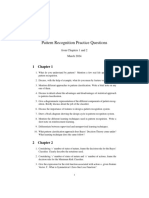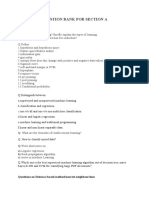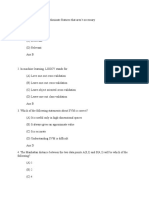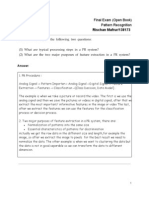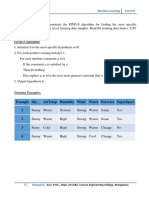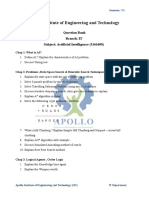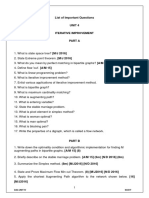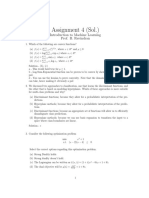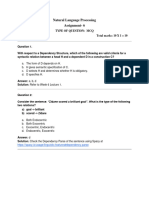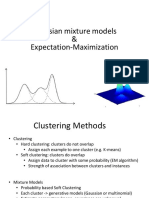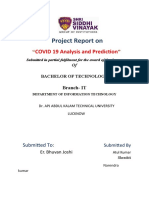100% found this document useful (1 vote)
903 views4 pagesAssignment 11
This document contains the solutions to an assignment on machine learning. It addresses questions about the necessary conditions for a probability density function, properties of a Gaussian Mixture Model (GMM) including the number of clusters k, values of πi for different values of k, issues that could arise from a non-Gaussian data distribution, and how to update πk in the EM algorithm. It also notes that K-nearest neighbors is a special case of GMM where the covariance is εI and πk = 1/k.
Uploaded by
prakash subramanianCopyright
© © All Rights Reserved
We take content rights seriously. If you suspect this is your content, claim it here.
Available Formats
Download as PDF, TXT or read online on Scribd
100% found this document useful (1 vote)
903 views4 pagesAssignment 11
This document contains the solutions to an assignment on machine learning. It addresses questions about the necessary conditions for a probability density function, properties of a Gaussian Mixture Model (GMM) including the number of clusters k, values of πi for different values of k, issues that could arise from a non-Gaussian data distribution, and how to update πk in the EM algorithm. It also notes that K-nearest neighbors is a special case of GMM where the covariance is εI and πk = 1/k.
Uploaded by
prakash subramanianCopyright
© © All Rights Reserved
We take content rights seriously. If you suspect this is your content, claim it here.
Available Formats
Download as PDF, TXT or read online on Scribd
/ 4






